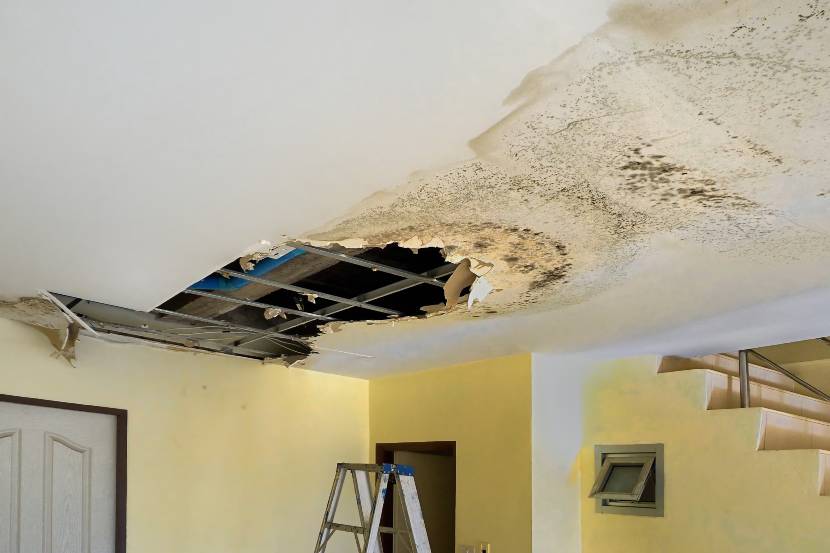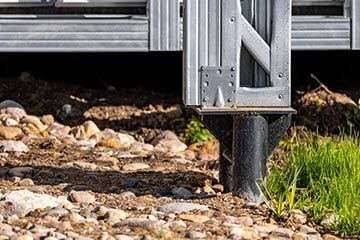Hidden leaks can cause serious damage to your home and belongings, but trace and access cover within your home insurance can help locate the source of a leak, and this guide explains what it is and how to make a claim.

Trace and access key takeaways
- What it is: A home insurance feature that pays to find a hidden water leak and access it.
- What it covers: Specialist investigations (e.g. thermal imaging) and opening walls/floors to reach the leak.
- What it doesn’t cover: Fixing the leak itself or repairing resulting damage - that’s covered by buildings insurance.
- When it applies: Only for escape of water (like burst pipes), not water coming in from outside.
- Is it included?: Usually included in buildings insurance, often up to around £5,000, but policies vary.
- Why it matters: Without it, you may have to pay high investigation and access costs yourself.
What is trace and access cover?
Trace and access is a home insurance feature that pays for the cost of finding the source of a hidden water leak and making it accessible for repair. Without this, the investigation costs can be huge.
Say you notice a damp patch on your living room ceiling, but can't work out where the water is coming from. Trace and access specialists can use thermal imaging or acoustic sensors to locate the source of the leak, saving you the cost of removing plasterboard, tiles, or floorboards to find the leaking pipe.
Trace and access doesn't cover fixing the leak or the resulting damage itself though. That's where your buildings insurance comes in.
Does my home insurance cover trace and access as standard?
Yes - the good news is that trace and access cover is usually part of your buildings insurance policy. But it's a good idea to check first as every policy varies.
The actual amount you're insured for can be different, but policies tend to cover up to £5,000.
Whenever you buy or renew your home insurance, look at the policy wording. Here you can see how much home insurance cover you have and whether trace and access is included.
If your insurance policy doesn’t include it, it's likely that you're responsible for paying the full cost of any investigations when you have a leak.
What does trace and access cover?
Trace and access will cover:
- The cost of finding the source of a leak in your home
- Making the area around the leak accessible so someone can repair it
- Any repairs needed to fix the damage that’s been caused by the search
What does trace and access not cover?
Trace and access doesn't cover:
- Repairing the leak. It’s only for finding the source of the leak and clearing it for repair.
- Any water coming in from the outside. It only covers the escape of water from a burst pipe, for example.
The cost of repairing pipes should be covered under your buildings insurance policy, but it's always worth checking.
How do I claim on my trace and access insurance if there is a leak?
How do I claim on my trace and access insurance if there is a leak?
Let's go through the steps you'll need to take to make a claim if you come across a leak in your home:
- Protect from further damage: Turn off the water supply to the leak and try to minimise the damage by moving any nearby belongings.
- Contact your insurer: Call your insurance provider as soon as possible. Many have 24/7 phone lines, apps, or online portals where you can begin the claim process.
- Provide details: Give your insurer your policy number, and provide as much detail about the situation as you can.
- Collect evidence: Take photos and/or videos of the damage and keep records of all communications and receipts.
- Let your insurer arrange specialists: Don't attempt to fix anything yourself. Your insurer will arrange for specialist trace and access engineers to find the leak. They may use methods like thermal imaging or acoustic surveys.
- Get the report: These specialists will report their findings to your insurer, including the leak's location and required access work.
- Arrange repairs: Once the leak has been found and accessed, you can discuss the actual repairs with your insurer under your buildings policy.
Why might a trace and access claim be refused?
There are a few reasons why your insurer may refuse your trace and access claim:
- There's no water damage: Although this is rare, if no water damage is found then it's hard to work out if there was a leak at all.
- Escape of water vs ingress of water: Trace and access covers things like a burst pipe where water has escaped, but it doesn't cover water coming in from the outside (ingress).
- Investigations found that a water leak isn't the problem: You aren't covered if they find that the source of your problems is not from a water leak, and so no insurable event has taken place.
Can I claim on my home insurance for a water leak?
Yes, you should be able to make a claim to track and trace water leaks. You should also be able to claim on your buildings insurance policy to fix the pipes or wherever the leak is coming from. That’s as long as your home was in a good state of repair before the leak and you have the right level of cover.
Your policy covers damage to the home’s structure too. For example, if the water damages your ceiling, your buildings insurance policy should cover that.
This may also include damage to your belongings. Things like your TV or sofa should be covered under your contents insurance policy.
Feeling lost? For more information, read our guide to making a home insurance claim.
Does home insurance cover roof leaks?
Yes, home insurance typically covers roof leaks from sudden, unexpected events like storms, falling trees, or hail.
But home insurance won't cover roof leaks caused by poor maintenance or gradual wear and tear. Your buildings insurance should cover the structure of the roof itself, while your contents insurance will provide cover for any damaged items inside your home.
Are underground pipes covered by home insurance?
Yes, most buildings insurance policies cover underground pipes if they’re on your private land. This includes:
- Pipes
- Drains
- Cables
- Tanks
Your home insurance covers you for the underground pipes you’re legally responsible for. So anything owned by a water company or your neighbours isn't covered.
Also, you might not be covered if:
- The damage isn’t accidental
- The pipes degrade due to usual wear and tear
What are the signs of a leaking pipe and what should I do about it?
The first signs of a water leak could be:
- A damp patch on a wall or floor that indicates water is leaking somewhere
- A sagging ceiling
- Rusty pipes
- Mould
If you think you have a leak you should call your home insurer. They might prefer to supply you with an approved plumber or engineer to carry out any work.
The tradesperson should be able to:
- Assess the problem
- Look for the source of the leak
- Advise on any work that needs to be carried out
If you need to remove a floor or sink to get at the pipes, your insurance company might only pay for things that are deemed necessary.
For example, let’s say you have a sink removed in your kitchen, but the tradesperson also took out some kitchen cupboards. Your insurance company might not pay for the cost of having new cupboards put back in.
It's a good idea to make sure you're aware of what will and won't be covered under your policy. This way you can make sure you're able to weigh up the costs of any repairs that aren't included.







